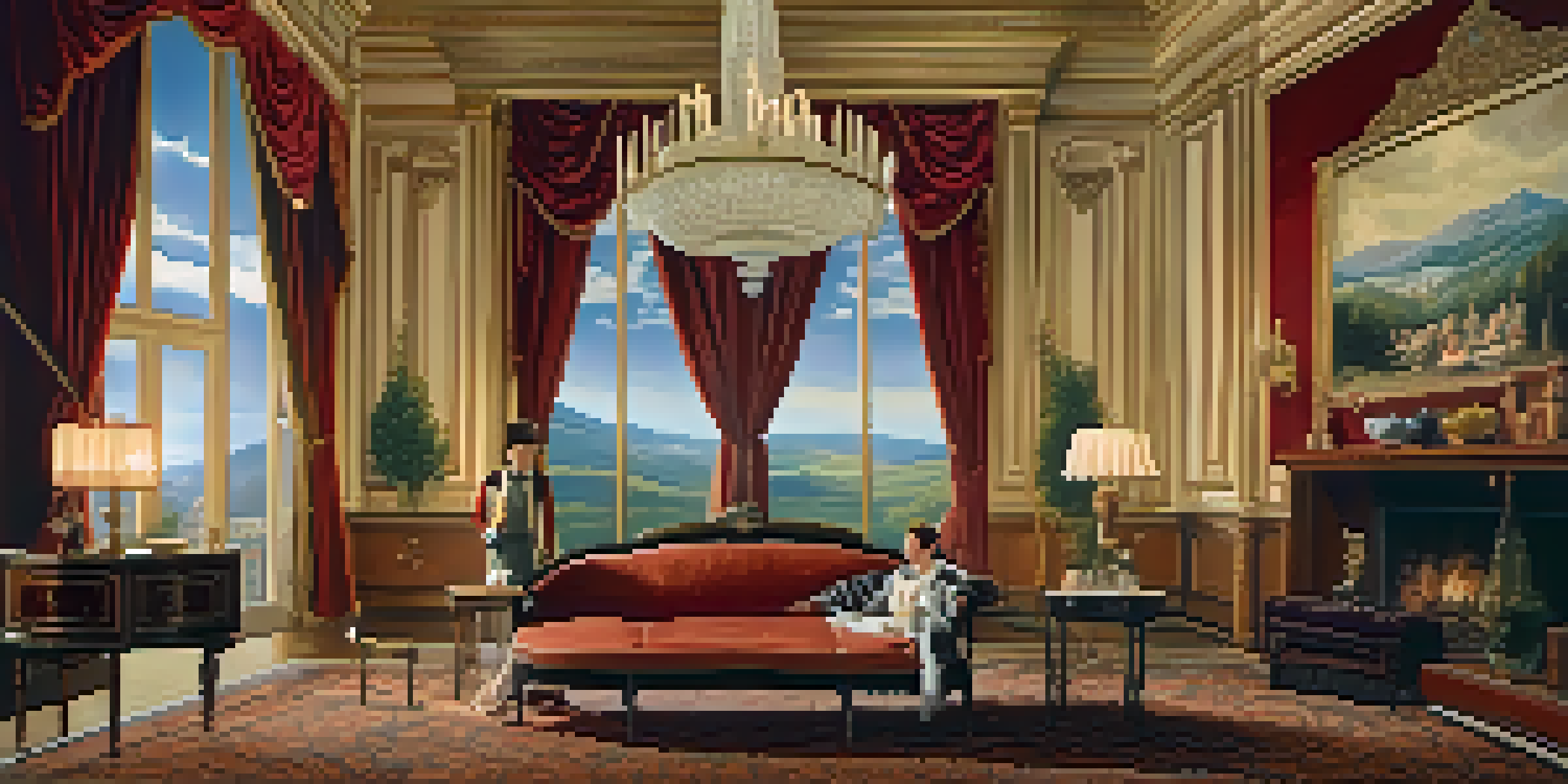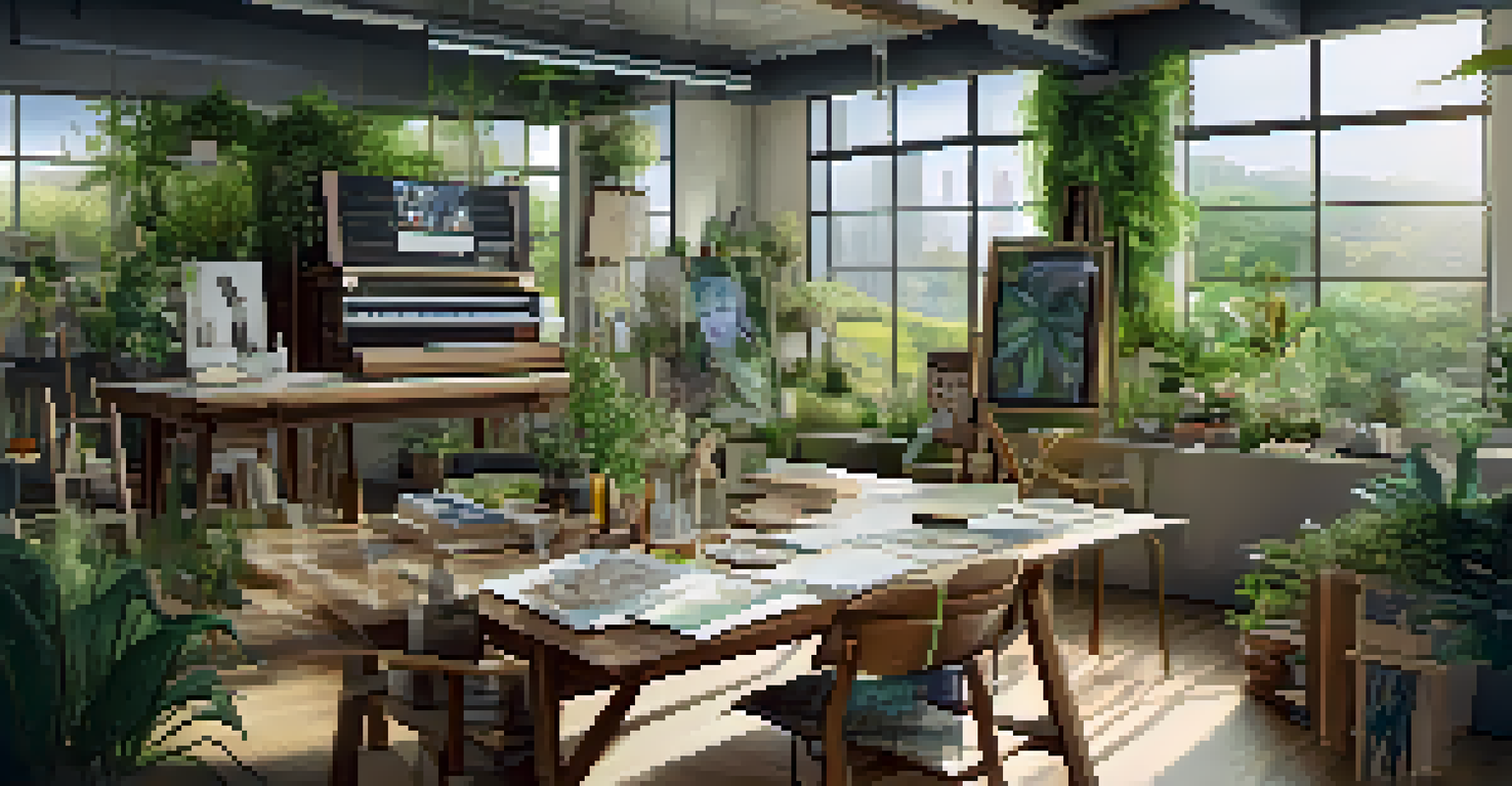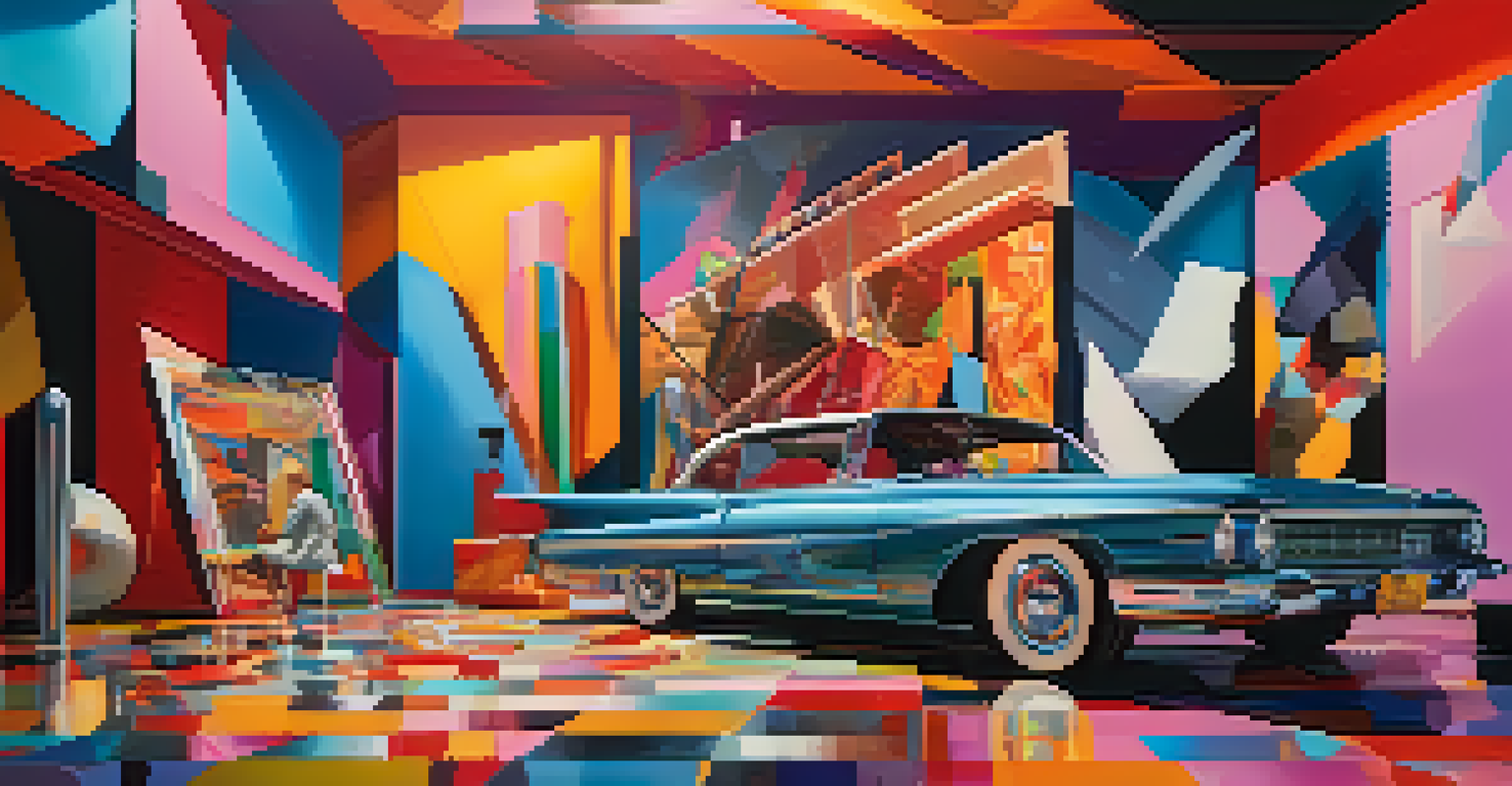The Evolution of Art Direction in Hollywood Film History

The Birth of Art Direction: Silent Film Era
In the early days of cinema, particularly during the silent film era, art direction was a nascent concept. Filmmakers relied heavily on set design and costumes to convey story and emotion, as there was no spoken dialogue to guide audiences. The lavish designs of films like 'The Birth of a Nation' showcased how visual storytelling could captivate viewers, setting the stage for future developments in art direction.
Art is not what you see, but what you make others see.
Art direction in this period was more about practical set construction than creativity. Directors often drew inspiration from theater, utilizing painted backdrops and elaborate props to create immersive worlds. This approach laid the groundwork for the pivotal role that art direction would come to play in film, as it was recognized that visuals could significantly enhance storytelling.
As films transitioned into the sound era, the importance of art direction became even more pronounced. Directors began to understand that a well-crafted visual environment could elevate the emotional impact of dialogue and performance, leading to a more holistic storytelling experience.
Golden Age of Hollywood: Art Direction Takes Center Stage
The Golden Age of Hollywood marked a significant shift in the role of art direction, as studios began to invest heavily in visual aesthetics. Iconic films like 'Gone with the Wind' and 'The Wizard of Oz' featured stunning set designs that became synonymous with their narratives. This era saw art directors not just as set builders but as crucial collaborators in the filmmaking process, contributing to the film's overall vision.

During this time, the concept of the art director as a distinct role emerged, with professionals like Cedric Gibbons and William Cameron Menzies leading the charge. Their innovative designs set new standards for film aesthetics, blending beauty with functionality to create immersive environments. The use of color, texture, and artistic themes became essential elements of storytelling.
Art Direction's Evolution in Film
Art direction has transformed from practical set design in the silent film era to a vital storytelling element that enhances emotional depth in cinema.
These advancements paved the way for future filmmakers to experiment with art direction, leading to a richer visual language in films. The meticulous attention to detail and the pursuit of a cohesive aesthetic would influence generations of filmmakers, establishing art direction as a fundamental aspect of film production.
Post-War Era: A Shift Towards Realism
Following World War II, there was a notable shift in film aesthetics, with a growing emphasis on realism in art direction. Films like 'On the Waterfront' and 'The Apartment' embraced a more authentic visual style, often reflecting the gritty realities of contemporary life. This era marked a departure from the opulent designs of the past, as filmmakers sought to connect with audiences on a deeper, more relatable level.
Design is thinking made visual.
Art directors began to draw inspiration from real-world settings, utilizing actual locations and everyday objects to tell their stories. This approach not only grounded the films in reality but also allowed for a more immersive experience. The rise of location shooting became commonplace, further blurring the lines between fiction and reality.
This era of realism in art direction also coincided with the advent of new technologies, such as color film, which added depth and richness to visual storytelling. Directors and art directors alike started to see the potential of these tools, using them to enhance the authenticity of their artistic vision.
The Rise of New Hollywood: Experimental Art Direction
The late 1960s and 1970s ushered in the New Hollywood era, characterized by a wave of experimental storytelling and art direction. Directors like Martin Scorsese and Francis Ford Coppola pushed the boundaries of traditional filmmaking, often using art direction to create bold, innovative visual narratives. Films like 'Taxi Driver' and 'Apocalypse Now' showcased how art direction could reflect complex themes and characters.
During this time, art direction became more than just a background element; it was a vital part of the storytelling process. Filmmakers began to collaborate closely with art directors to develop unique visual styles that resonated with audiences. This creative partnership led to iconic imagery and unforgettable moments in cinema.
New Technologies Enhance Creativity
The digital revolution introduced tools like CGI, enabling art directors to create immersive experiences and push creative boundaries.
The experimental nature of this period also opened the door for diverse genres and storytelling techniques. The use of surrealism, symbolism, and striking visual contrasts became commonplace, allowing filmmakers to explore new artistic avenues and challenge conventional norms.
Digital Revolution: Transforming Art Direction
The advent of digital technology in the late 1990s transformed art direction in Hollywood, introducing new tools and possibilities. CGI (Computer-Generated Imagery) became a game-changer, allowing artists to create fantastical worlds and elements that were previously unimaginable. Films like 'Avatar' and 'The Lord of the Rings' demonstrated the power of digital art direction, blending practical effects with digital creations to create immersive cinematic experiences.
This digital revolution also led to a shift in the skill sets required for art directors. Today, professionals must be adept not only in traditional design techniques but also in digital modeling and visual effects. This evolution has expanded the scope of what art directors can achieve, enabling them to push the boundaries of creativity even further.
Moreover, the integration of virtual reality and augmented reality into the filmmaking process is opening up new avenues for art direction. As technology continues to evolve, so too will the ways in which art directors can tell stories and engage audiences in uniquely immersive ways.
Contemporary Trends: Diversity and Sustainability in Art Direction
In recent years, there has been a growing emphasis on diversity and sustainability within art direction in Hollywood. Filmmakers are increasingly recognizing the importance of representing various cultures and perspectives through their visual storytelling. This shift is reflected in the work of art directors who strive to create authentic environments that resonate with a diverse audience.
Sustainable practices are also becoming a priority in the film industry, with art directors focusing on eco-friendly materials and sets. This commitment not only reduces the environmental impact of film production but also aligns with the values of a socially conscious audience. Films like 'The Revenant' have showcased these efforts, blending stunning visuals with a message of environmental responsibility.
Focus on Diversity and Sustainability
Contemporary art direction emphasizes diverse representation and sustainable practices, reflecting societal values and environmental consciousness.
As we move forward, it’s clear that art direction will continue to evolve in response to societal changes and technological advancements. The combination of creativity, inclusivity, and sustainability will shape the future of art direction in Hollywood, ensuring that it remains a vital aspect of the filmmaking process.
Looking Ahead: The Future of Art Direction in Film
As we look to the future, the role of art direction in Hollywood film is poised for exciting developments. With rapid technological advancements, art directors will have access to more sophisticated tools than ever before. This opens up endless possibilities for creating stunning visuals and immersive experiences that captivate audiences worldwide.
Moreover, the emphasis on storytelling through visuals will likely continue to grow. Art direction will play a crucial role in shaping narratives, helping to convey emotions, themes, and messages in ways that resonate with viewers on a deeper level. The collaboration between directors and art directors will remain essential in crafting cohesive and compelling visual stories.

In conclusion, the evolution of art direction in Hollywood reflects the broader changes in technology, culture, and storytelling. As we embrace new challenges and opportunities, art direction will undoubtedly continue to evolve, enriching the cinematic landscape for generations to come.